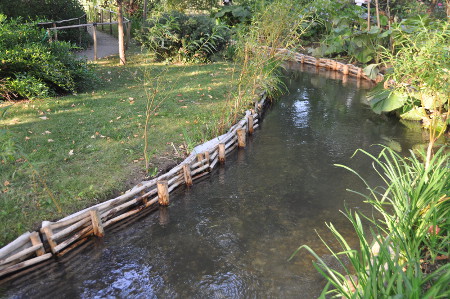 Strengthening the edges of natural tanks can be done in different ways and using different materials. Different considerations determine the choice of method and material, such as. Type and purpose of the tank, use, Designed type of DNA strengthening, Availability of materials, economic considerations. Many natural tanks have edges quite permanently strengthened by various coastal vegetation. These are usually shrubs and various perennial plants that form dense and compact root systems. Therefore, sometimes the cheapest way of strengthening is to cover the edge of the tank, a turf or plant it with various plants. It is a known way to create such fortification from freshly cut willow pegs. Such plugs, while rooting, give rise to shrubs that create strengthening. Of course, this method can not be used everywhere, Because growing bushes can not be desirable anywhere.
Strengthening the edges of natural tanks can be done in different ways and using different materials. Different considerations determine the choice of method and material, such as. Type and purpose of the tank, use, Designed type of DNA strengthening, Availability of materials, economic considerations. Many natural tanks have edges quite permanently strengthened by various coastal vegetation. These are usually shrubs and various perennial plants that form dense and compact root systems. Therefore, sometimes the cheapest way of strengthening is to cover the edge of the tank, a turf or plant it with various plants. It is a known way to create such fortification from freshly cut willow pegs. Such plugs, while rooting, give rise to shrubs that create strengthening. Of course, this method can not be used everywhere, Because growing bushes can not be desirable anywhere.
The most widespread way to strengthen the edges of natural tanks is fascination. It involves driving and intervals 50-70 cm of dowels and interlacing wicker branches between them. The amount of such fortification is usually 30-60 cm. Wicker branches due to the gaps that occur between them are not sufficient protection against sliding and flowing down the softened soil from the shore. The tightness of fascine strengthening can be increased by laying the foil band from the edge.
The disadvantage of fascine strengthening is low durability. Dowel wood (most often willow) and wicker twigs are very easily decomposing and usually after 2-3 such a strengthening breaks down. Various plants may be a great help in extending the durability of such fortifications, which settle on the shore. Thanks to them, a secondary vegetable strengthening is formed sufficiently protecting the edge from blurring and the landslide.